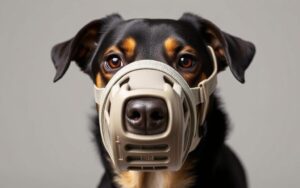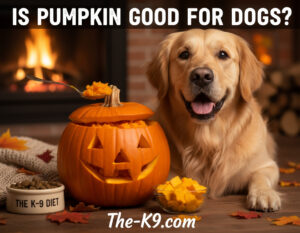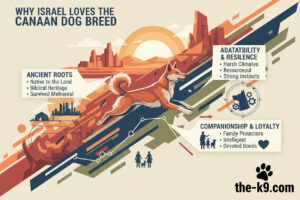
Feeding your dog the right amount is key for their health. PetMD says giving them high-quality dog food in the right amount is simple. It keeps them healthy.
A dog feeding guide helps figure out the perfect food amount for your dog. Age, breed, and size matter a lot. They all affect how much food your dog needs.
Knowing your dog’s feeding requirements is vital. It ensures they get the nutrients they need for good health.
- Understanding Your Dog's Nutritional Needs
- Factors That Determine How Much to Feed Your Dog
- How Much Should I Feed My Dog Based on Weight
- Calculating the Right Portion Size
- Feeding Schedules and Methods
- Special Feeding Considerations
- Signs You're Feeding Too Much or Too Little
- Creating a Healthy Feeding Routine for Your Dog's Lifelong Health
- FAQ
Understanding Your Dog’s Nutritional Needs
Knowing what your dog needs to eat is key for their health. As dogs age or their lifestyle changes, their diet needs can shift, PetMD says.
Basic Canine Nutrition Principles
Dogs need a balanced diet with proteins, fats, carbs, vitamins, and minerals. Protein is vital for their muscles, skin, and tissues. The quality and source of these nutrients matter a lot for their health.
The Importance of Proper Portion Control
It’s important to control how much food your dog gets. Too much can make them fat, while too little can harm their health. Keep an eye on your dog’s weight and adjust their food as needed.
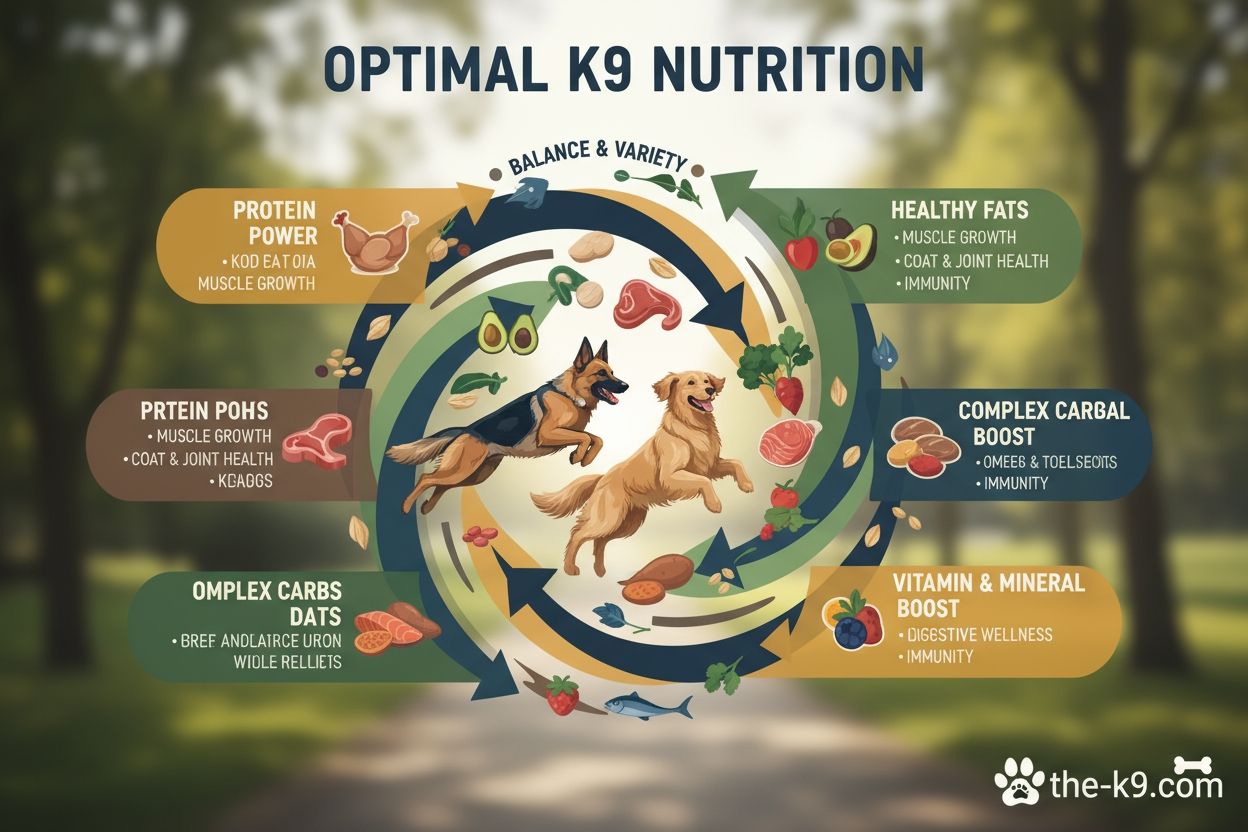
Calories vs. Volume of Food
It’s important to know the difference between food volume and calories. Dogs need different amounts of calories based on their size, age, and how active they are. For example, a very active dog might need more calories than a less active one, even if they’re the same size.
To make sure you’re feeding the right amount, use a measuring cup or a scale. This helps keep portions consistent and avoids overfeeding.
Factors That Determine How Much to Feed Your Dog
Many things, like breed, size, age, and how active they are, help figure out how much food your dog needs. PetMD says things like age, size, how active they are, and if they’re pregnant or not also matter.
Breed and Size Considerations
Dogs of different breeds and sizes need different amounts of food. Big dogs, like Great Danes, might need more because of their size. But small dogs, like Chihuahuas, need less.
Age and Life Stage
A dog’s age is very important for their diet. Puppies need more food and nutrients because they’re growing. PetMD notes, “Puppies need more calories per pound of body weight than adult dogs.”
Activity Level and Metabolism
A dog’s activity level is also key. Dogs that are very active, like working dogs, need more calories to keep their energy up. But dogs that don’t move as much need fewer calories to avoid getting too fat.
Health Status and Medical Conditions
Dogs with health problems or certain conditions might need special diets. For example, dogs with diabetes or food allergies might need special food. Always talk to a vet to find the right diet for your dog’s health issues.
How Much Should I Feed My Dog Based on Weight
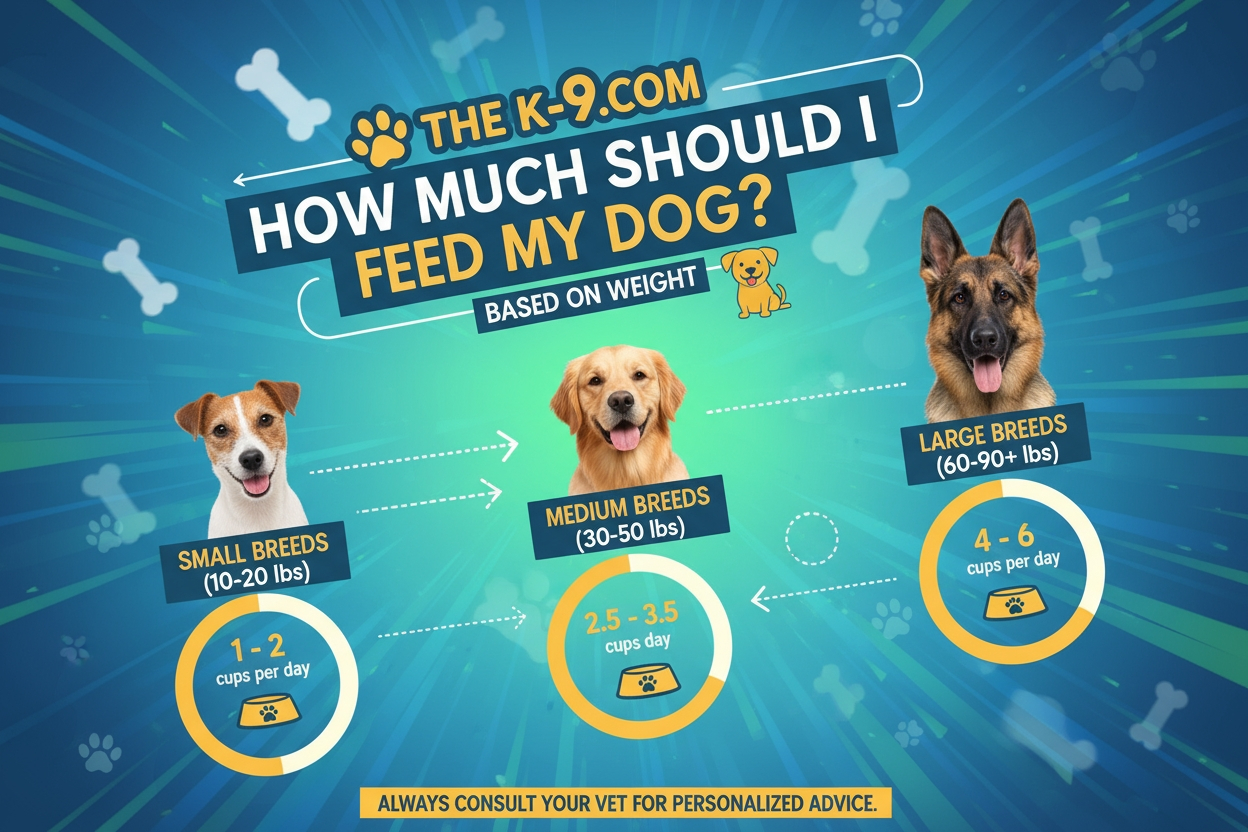
Knowing how much to feed your dog based on their weight is key to their health. The right amount of food depends on their size, breed, and other factors. A dog feeding chart can help figure out the right amount.
Small Dogs (Under 20 lbs)
Small dogs eat less because they are smaller and have a faster metabolism. Feed them about 1/4 to 1 cup of dry food daily. Split this into 2-3 meals.
Medium Dogs (20-50 lbs)
Medium-sized dogs need a moderate amount of food. They usually eat between 1 to 2 cups of dry food daily. The exact amount depends on their activity level and breed.
Large Dogs (50-90 lbs)
Large dogs need more food to keep up with their size and energy. They typically eat 2 to 4 cups of dry food daily. This is split into two meals.
Giant Breeds (Over 90 lbs)
Giant breeds have big dietary needs because of their size. They might need up to 5 cups or more of dry food daily. This depends on their activity level and health.
| Dog Size | Weight Range | Daily Feeding Amount |
|---|---|---|
| Small | Under 20 lbs | 1/4 to 1 cup |
| Medium | 20-50 lbs | 1 to 2 cups |
| Large | 50-90 lbs | 2 to 4 cups |
| Giant | Over 90 lbs | 4 to 5+ cups |
Always talk to your vet to find the best feeding schedule and amount for your dog. A dog feeding chart can guide you. But remember to consider your dog’s age, activity level, and health too.
Calculating the Right Portion Size
Figuring out the right amount of food for your dog is key. It helps keep them healthy and avoids problems from eating too much or too little. This is important for their overall well-being.
Reading and Interpreting Dog Food Labels
Start by reading the dog food label. It tells you how much to feed, what’s in the food, and more. Always follow the guidelines on the label, but adjust for your dog’s unique needs. PetMD advises using body condition scoring to fine-tune your dog’s food amount.
Using Measuring Cups and Scales
For precise measurements, use cups or a scale. This ensures your dog gets the same amount every time. It’s important for keeping their food portions in check.
Adjusting Portions Based on Body Condition
Watch your dog’s body condition score (BCS) to see if the food amount is right. If they’re gaining or losing weight, you can tweak their portions. A healthy BCS means the food amount is probably just right.
Feeding Schedules and Methods
It’s important to have a regular dog feeding schedule for your pet’s health. The way and when you feed your dog affects their digestion, energy, and overall health.
Free Feeding vs. Scheduled Meals
Many dog owners wonder if they should free feed or stick to a schedule. Free feeding lets dogs eat whenever they want. On the other hand, scheduled meals mean feeding at specific times. Most experts suggest scheduled meals to keep your dog at a healthy weight and prevent overeating.
Optimal Feeding Times Throughout the Day
The best times to feed your dog depend on their age, size, and how active they are. Usually, dogs eat twice a day. But some might need more meals. Dividing daily portions into several meals can help control hunger and keep energy up.
Dividing Daily Portions for Multiple Meals
If your dog needs to eat more than twice a day, it’s key to split their food right. Talk to your vet to find out the best feeding plan for your dog.
Special Feeding Considerations
Feeding your dog is not a one-size-fits-all job. Many factors need special attention. Different life stages and health conditions require unique feeding plans to keep your dog healthy.
Puppies and Growing Dogs
Puppies need more calories and nutrients than adult dogs. This is because they grow and develop quickly. A puppy feeding guide helps figure out the right food amount. Puppies usually need to eat 3-4 times a day until they are about six months old.
Senior Dogs and Reduced Activity
As dogs get older, their metabolism slows down. They may also move less. Senior dogs might need fewer calories to avoid getting too fat. But they also need plenty of nutrients. Changing their diet to have fewer calories and more fiber can help manage their weight and support their health.
Pregnant or Nursing Dogs
Pregnant or nursing dogs need more nutrients. They need more calories, protein, and calcium. It’s important to follow a vet’s advice on feeding them to make sure they get the right nutrients.
Dogs with Health Conditions or Weight Issues
Dogs with health problems or weight issues need special care. For example, dogs with diabetes might need a diet low in carbs. Dogs with food allergies might need a special diet. Talking to a vet can help find the best diet for dogs with specific health needs.
| Life Stage/Condition | Nutritional Needs | Feeding Recommendations |
|---|---|---|
| Puppies | High calories, protein, and nutrients | Feed 3-4 times a day |
| Senior Dogs | Fewer calories, more fiber | Adjust portion sizes based on activity level |
| Pregnant/Nursing Dogs | Increased calories, protein, and calcium | Follow veterinarian’s feeding recommendations |
Signs You’re Feeding Too Much or Too Little
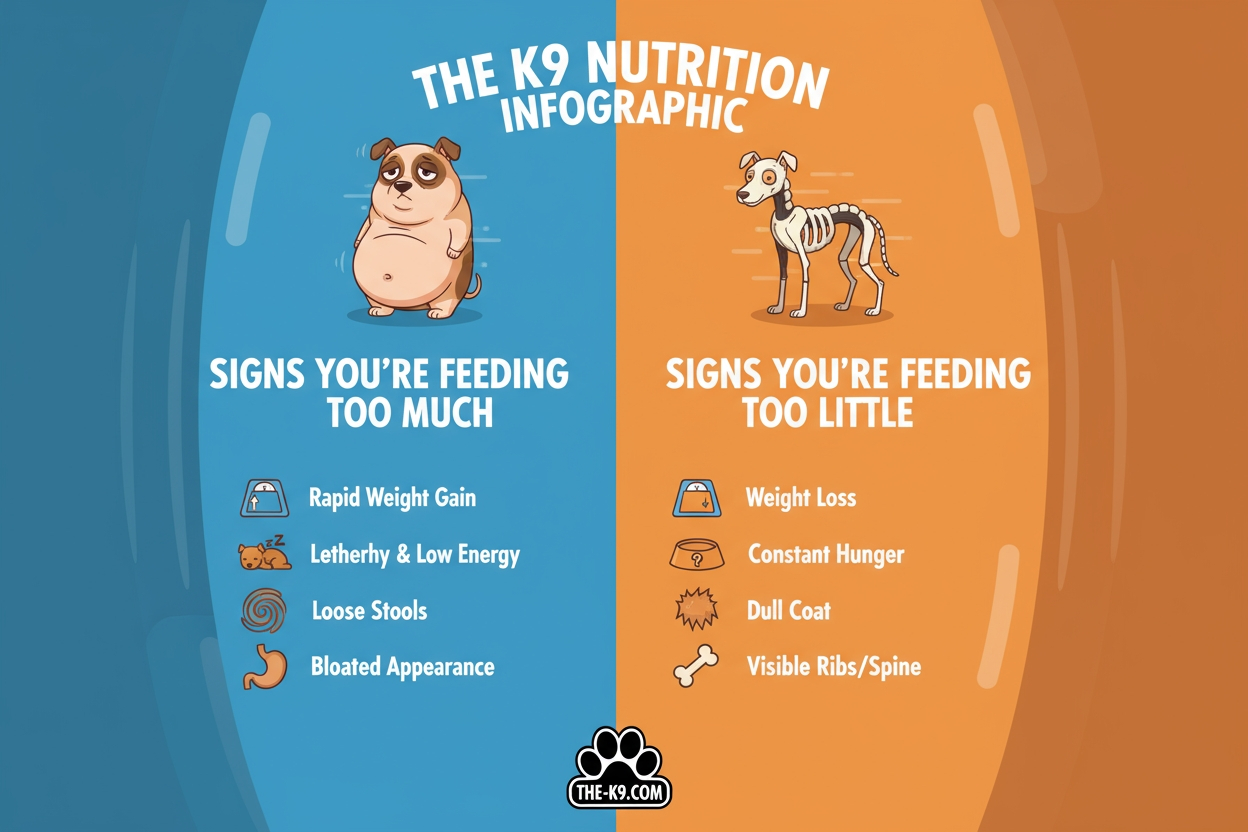
Feeding your dog too much or too little can harm them. It’s important to watch for signs and adjust their food as needed. This keeps them healthy and happy.
Recognizing an Overweight Dog
An overweight dog might show signs like extra fat and no waistline. They might also have trouble moving. PetMD says too much food can make dogs obese, which is bad for their health.
Identifying an Underweight Dog
An underweight dog might have visible ribs and a thin spine. They might also seem tired. Not eating enough can lead to health problems.
Monitoring Energy Levels and Coat Condition
A dog’s energy and coat can show if they’re eating right. A healthy dog has a shiny coat and lots of energy.
When to Consult Your Veterinarian
If you’re not sure about your dog’s food, talk to a vet. They can give advice that fits your dog’s needs and health.
| Signs | Overfeeding | Underfeeding |
|---|---|---|
| Visible Body Changes | Fat deposits, lack of waistline | Visible ribs, prominent spine |
| Energy Levels | Decreased activity | Lack of energy |
| Coat Condition | Dull coat possible | Dull or brittle coat |
Consulting a veterinarian is key to making sure your dog eats well. They can make a special diet plan for your dog’s health.
“A well-balanced diet is essential for maintaining your dog’s overall health. Regular check-ups with your veterinarian can help identify any potential issues early on.
Creating a Healthy Feeding Routine for Your Dog’s Lifelong Health
Creating a healthy feeding routine is key for your dog’s well-being. It affects their energy, coat, and health (Source: PetMD). Feeding the right amount is essential.
Think about your dog’s breed, age, and activity level when planning their diet. Split their daily food into several meals. Adjust as needed to keep them healthy.
Following these tips and a consistent schedule helps your dog stay healthy and happy. A good feeding plan is vital for their lifelong health. With the right advice, you can make smart choices about their food.







